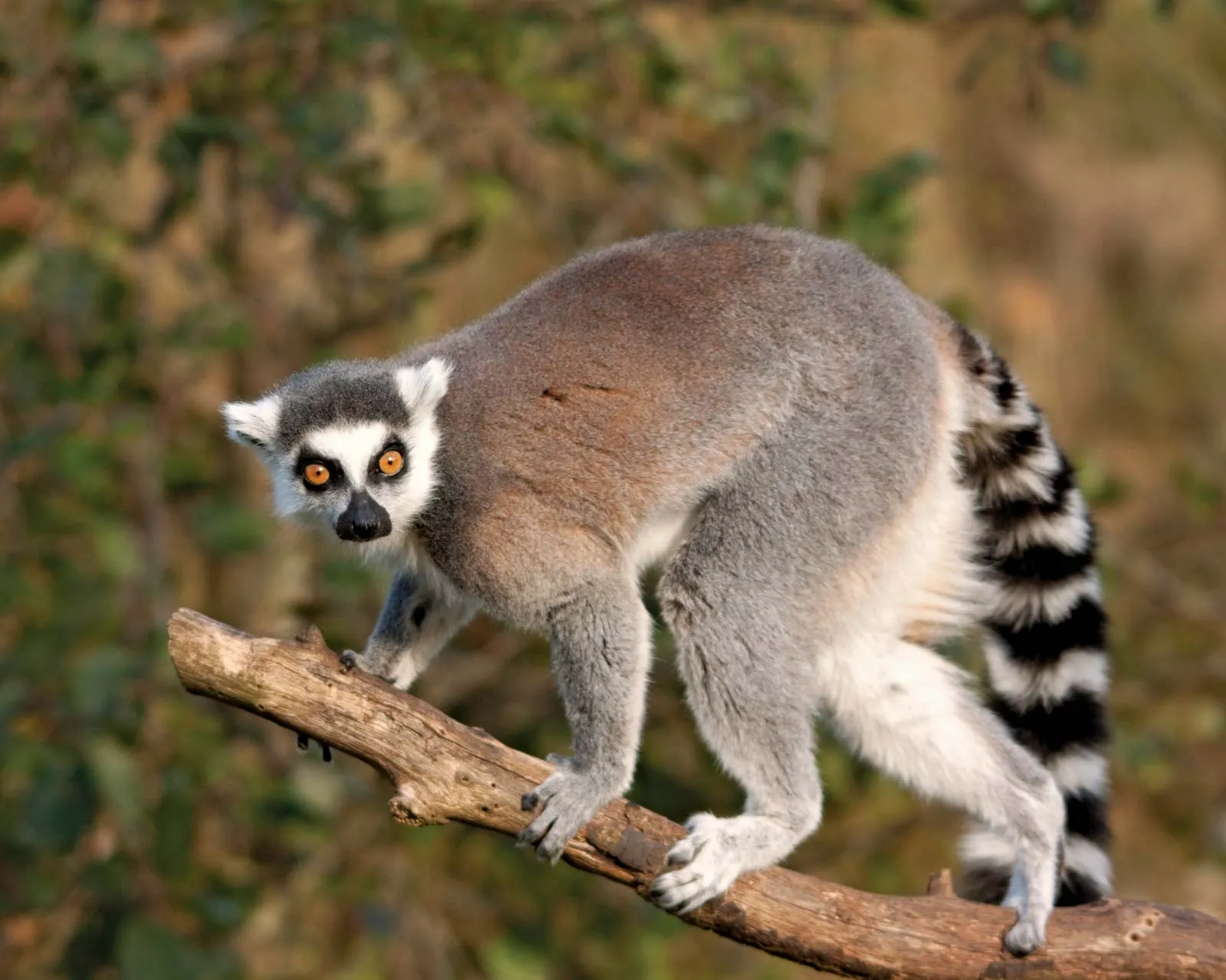
Lemurs are nocturnal animals with big, bulging eyes. They live in forests on the islands of Madagascar, off the east coast of Africa. They have soft, thick fur and bushy tails with which they scare other animals. They even use their tails to signal to other lemurs, and wave their scent around from a gland in their bottoms.
There are over 100 species of lemur, in all shapes and sizes. With an estimated 112 species, lemurs come in all shapes and sizes. The smallest, Madame berthe’s mouse lemur, has an average body weight of 30g, and the largest, the indri, weighs about 6-9.5kg (that’s about the size of a human child!). The number of lemur species changes often due to new discoveries and genetic testing, leading to the scientific classification of new species!
Lemurs have a female-dominant society. Who rules the world? Well, in lemur society the females rule! At the center of lemur society is a female leader who rises to the occasion of directing a social group. This happens quite rarely in mammals, where male dominance generally stands. Lemur females show signs of dominance in the way they mark their territories within the group. As crucial seed dispersers, lemurs are “creators of the forests”. Lemurs help maintain forest diversity, structure, and dynamics through the movement of seeds! Yes, some lemur species play a significant role in their ecosystem by being seed dispersers. But what does this mean?
Madagascar is the only place lemurs naturally call home. Located 250 miles off the east coast of Africa is the island of Madagascar, the 4th largest island in the world, and the only habitat for wild lemurs in the world.
Madagascar is one of the world’s most important biodiversity hotspots! While a large proportion of its wildlife found nowhere else, much of Madagascar’s wildlife is also threatened by human actions.
Being a seed disperser means they help seeds and/or pollen move from one area to another. Ruffed lemurs, like the black and white ruffed lemur, is a good example of a lemur that acts as a key seed disperser. Besides humans, lemurs are one of the only primates that have blue eyes. Primates have a variety of eye shapes and colors, but blue irises are rare in mammals. Other than humans, the only primates with naturally occurring blue eyes are the blue-eyed black lemurs, sometimes called Sclater’s lemurs. Lemurs self-medicate, and some get high off of millipedes. Who needs a pharmacy when you live in the forest?! Some lemur species use the forest to self medicate, acting as their own personal pharmacy. Red-fronted brown lemurs eat millipedes to get rid of gastrointestinal parasites, such as worms.
Some lemurs sing a capella. Others communicate with stink! In the rainforests of east Madagascar you will often hear the songs of the indri. Indri are the talented a capella group of the animal kingdom, with both the males and females singing, and often in sync with each other. Ring-tailed lemurs also communicate and mark their territory in a unique way. They have scent glands on their wrists and chest, which are particularly useful during the breeding season. A male will mix secretions from his wrist and chest glands to mark his territory, and lift his tail to prepare for a ‘stink fight’ against a rival.
Lemurs are the world’s oldest living primates. A fact that few people know is that lemurs are considered the world’s oldest primates! The story of lemurs begins over 70 million years ago, long before humans. This was a world when lemur-like animals, the planet’s first primates, roamed Africa along with the dinosaurs. Scientists think that around 65 million years ago, lemurs rafted across the Indian Ocean to the island of Madagascar on floating vegetation. Over the next tens of millions of years, the lemurs evolved and diversified on Madagascar to the 112 species that we see today.
Credit : Lemur conservation network
Picture Credit : Google

